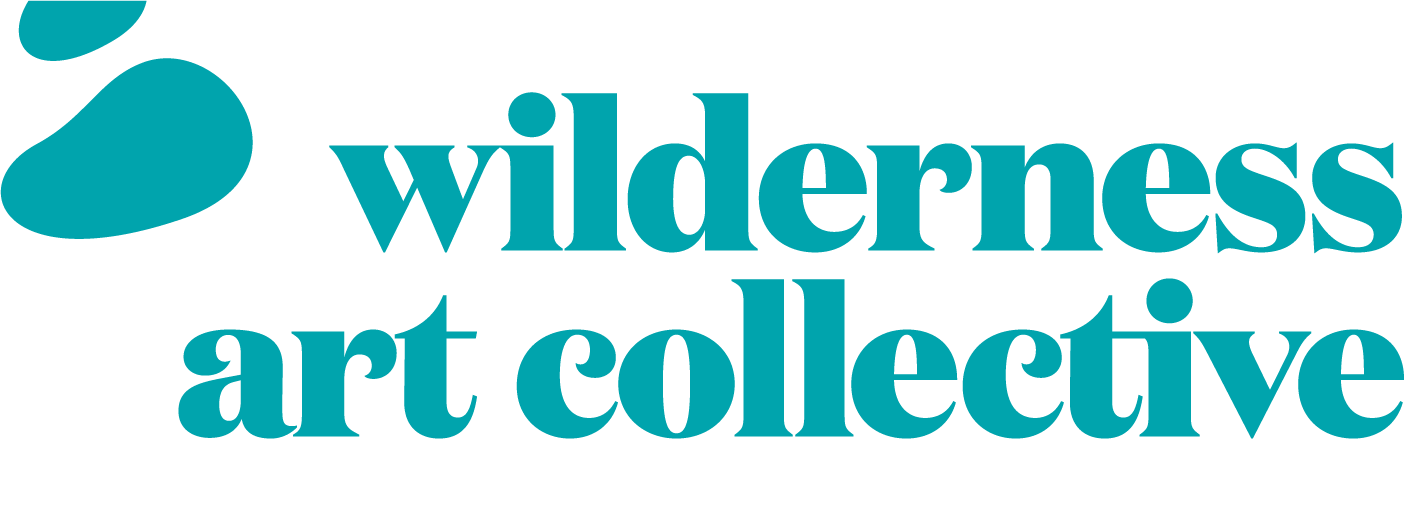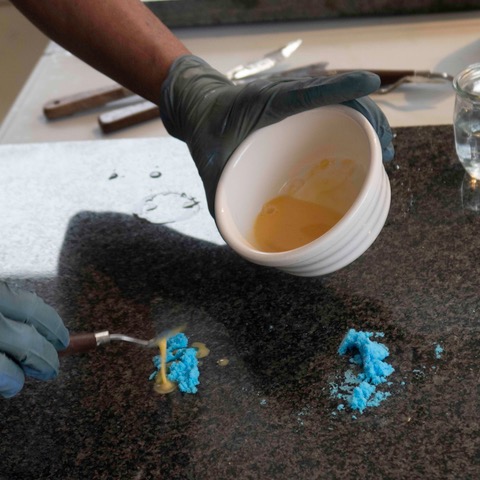Meet the Artist - Catalina Christensen
Catalina Christensen
by Peter Geraerts
Catalina in her Studio
Something that is a continuing joy for me, when meeting Catalina, and those other artists in the collective, is their enthusiasm and passion for what they do.
We recently met on a very windy afternoon at her studio in London. As soon as I walked through the door I was met with tables and shelves filled with glass bottles of pigment. There are colours ranging from subtle to electric and everything in between. Amongst many other projects in progress there are paintings on the walls, neatly labelled rocks and pigments being washed. Where do I start?
I’m of the belief that enjoying what you do is one of the ingredients in giving yourself a chance of succeeding. With Catalina, from the first time we met, that enjoyment could never be in doubt.
Having been shortlisted for The Royal Arts Prize this year plus a very impressive cv there is no doubt as to her drive and focus.
From an early age, a love of rocks and fossils were nurtured in her native Colombia. This developed into a love of art but due to circumstances at that time branched out into graduating as an architect, earning a Master’s degree in City and Regional Planning and then onto a career in Architecture. This developed skills that could be used later when she was drawn back to her painting.
Catalina redirected her efforts and studied for a Diploma in Art and Design (PSAD) and then achieved a Fine Art degree with First-class Honours at The City & Guilds of London Art School
.Catalina has a holistic approach to her work. Her mantra is ‘Process, Materiality, Alchemy and Experimentation’ She begins by collecting the rock then grinds it down using a combination of a pestle and mortar and homemade grinder. The resulting pigment is then washed and mixed to produce the paint she uses for her work. Even that is still being developed over the last couple of years as much as possible away from using man made substances.
Whilst at the moment she buys in the canvases Catalina makes the stretchers herself. It’s that curiosity with all elements of the process that drives her towards a more detailed understanding. She even makes her own charcoal experimenting using different woods.
Attending numerous workshops, one of which, more recently, was taken with a view to growing indigo plants to produce her own pigment, emphasises how strong her thirst for knowledge is.
That doesn’t mean to say that all of the rocks that Catalina collects are ground down to form the pigment for the basis of new paintings. She collects them in their own right and that for her is a pleasure in itself. She also acknowledges that her painting would not be where it is without having first developed that interest in rocks and pigment.
In addition, Catalina buys powdered metals to produce pigments when it hasn’t either been possible to collect the rock or it’s too hard to grind. She is then able to mix and corrode it to various levels until she gets a colour she is happy with.
One of her future plans, amongst many, is to create her own library of rocks and pigments from her travels. That on its own is probably a lifetime’s work. She also has an programme where she has received donations from and exchanged pigments with other artists around the world.
IMPOSITION - Metal pigments, indigo dye, metal barrier and egg tempera on canvas Catalina Christensen 2016
It’s that desire to understand what is behind the rock to identify the colours and taking a more scientific approach. That is on an ever increasing to do list for the future.
Catalina experiments, through various processes, to get the colours that will reflect what she wants to portray when used in a painting. These colours can even be influenced by the type of eggs she buys which when the yolk is mixed with the pigment helps bind when producing the paint.
She is very keen to discover for herself what can and can’t be done. She’ll admit, in that pursuit, she is stubborn.
In the studio there are a series of large canvases that surround us. Whilst Catalina is looking to move on from where she considers her work to be purely representational it’s interesting to hear her describe her work. There is one painting to which she added a small piece of iron. Water was then allowed to mix with it to produce a rust coloured ‘stain’ on her own developed green pigment of the landscape denoting the decay we are bringing about in our world. Areas of negative space are often present, they tend to represent the purity of the landscape. This is a skill she has learnt from her days as an architect but for Catalina it’s that innate feeling of what is right that it fits in with her paintings now.
Something I’m interested in is how Catalina views her earlier work - some artists distance themselves from it as they develop their skills but Catalina sees it as part of the journey. As mentioned above the products and approach she now has is trying to be more considerate towards the environment.
Catalina is a co-founder of The Wilderness Art Collective along with Sam Gare and Luke Walker.
She had been keen on developing a collaboration with other artists for a while. She tried to organise an artist hub for artists of all skills near where her studio is but that didn’t work out. She was contacted by Luke and the partnership developed from there.
Catalina is always looking to be positive. Through the Art Collective she wants to extend to others how she feels in the places she travels to, how important they are to preserve and to give people a glimpse of what she has experienced .
She wants it to be a positive message to show the good side of nature and its beauty - the message we see in the media is often different.
Catalina comes across as a happy, enthusiastic and passionate person. Her work is a reflection of what is important to her; colour, texture, climate change, environment. Her aim is to engage people and immerse them in her world.
She appreciates that she has been very fortunate to travel but she needs to spend time in a location to immerse herself in the place. Taking a combination of photos and videos in these places can then be used for future reference when she gets back home to her studio. It’s from that immersion that the feeling is derived and the inspiration follows.
There are a number of note books on the table with endless ideas and drawings some of which will be developed, others not. This just emphasises how this is very much a non-stop way of life for Catalina. There is never time just to concentrate on one element either. The pigments need to be washed or ground. Ideas needs following up on, designs are drawn and considered and then it all needs cataloguing. There is always something to do
I think that it is fair to say that it was inevitable that Catalina would reach this point in her artistic life. There have been a series of stages that individually would be impressive but when you bring them all together they become even more special.
A selection of Catalina’s oxide pigments.
It’s full on but an absolute pleasure. I’m exhausted after seeing all of the things that Catalina gets involved in and that’s only after a couple of hours. I’ll continue to view her work with admiration and a new appreciation.
As I have come to learn over a period of time since I’ve known Catalina she too should consider bottling her own enthusiasm - it’s contagious.






